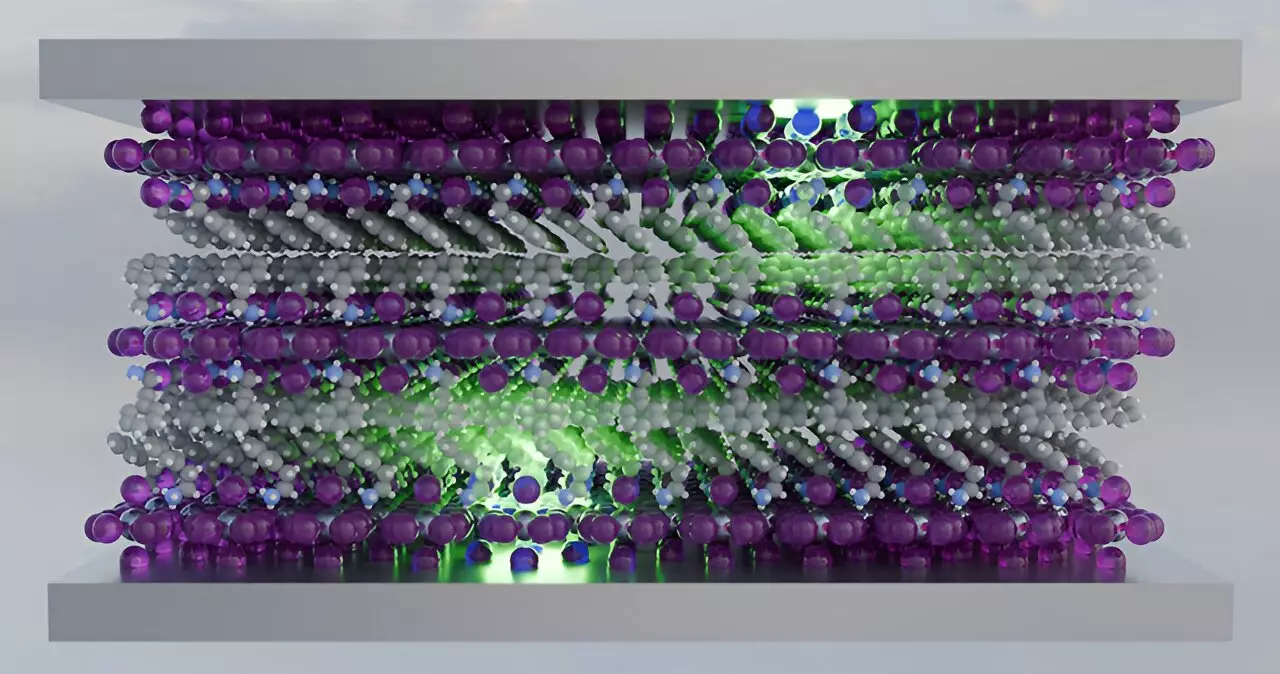In the realm of optoelectronics such as solar cells and light-emitting diodes (LEDs), the thrill of innovation meets the harsh realities of physical limitations. One significant hurdle that stands in the way of achieving greater efficiency is the phenomenon known as exciton-exciton annihilation. This largely unseen process occurs when excitons—bound pairs of electrons and holes created when light interacts with semiconductors—collide and effectively cancel each other out, leading to a drain on energy that directly affects the performance of these devices. The intricate dance of energy absorption, conversion, and dissipation transforms into a race against time, where every fraction of a second counts.
The Quest for Enhanced Efficiency
The efficiency of solar cells and LEDs hinges on the delicate balance between minimizing energy loss and maximizing desired outputs. The ongoing quest to tame exciton-exciton annihilation has led scientists from the National Renewable Energy Laboratory (NREL) and the University of Colorado Boulder to investigate innovative approaches aimed at enhancing optoelectronic performance. With controlled structural modifications, particularly involving the physical configuration of light and matter systems, a breakthrough may be in sight. Shifting the paradigm from passive observation to strategic manipulation holds promise for radically improving energy conversion rates.
Leveraging Cavity Polaritons
At the heart of this groundbreaking research is the concept of cavity polaritons: hybrid states formed from the combination of photons and excitons. By utilizing a Fabry-Pérot microcavity—a structure comprising two partially reflective mirrors—the researchers can create an environment where these exciton-photon couples thrive. The results reveal that, when the excitons are effectively “coupled” with the cavity polaritons, there emerges an opportunity to dramatically lower the rates of exciton-exciton annihilation. In practical terms, this translates to improved longevity for the excited state of the material—and, subsequently, higher efficiency in energy production.
Quantum Insights into Energy Transfer
The researchers achieved this exciting control over exciton dynamics utilizing transient absorption spectroscopy, a sophisticated technique designed for real-time observation of electronic states. The revelation came when they discovered that varying the mirror separation in their cavity system produced notable changes in the lifetimes of excited states. Such discoveries underscore the quantum mechanical nature of polaritons, illustrating how these ephemeral entities can oscillate between their photonic and excitonic characteristics almost instantaneously. Unlike excitons, which are prone to annihilation during interactions, photons retain their integrity, thus allowing for enhanced interaction dynamics.
The Implications for Future Technologies
The implications of this research extend far beyond the confines of laboratory settings. A future in which exciton management is optimized could signal a new era for the performance of LEDs and solar cells. Harnessing the quantum behavior of excitons and photons in a controlled manner may yield significant reductions in energy losses, elevating the overall efficiency of electronic devices. As scientists like Jao van de Lagemaat, director of NREL’s chemistry and nanoscience center, emphasize, mastering exciton dynamics presents an exciting opportunity for energy-efficient technologies that could redefine standards in power consumption and output.
The intersection of quantum mechanics and practical applications is paving the way for advancements in optoelectronics that were once confined to theoretical discussions. The partnership between researchers at NREL and the University of Colorado Boulder embodies a commitment to exploration and innovation. As we continue to problem-solve around the losses caused by exciton-exciton annihilation, the pathway opens wider towards the integration of cutting-edge materials and technologies capable of reshaping our ecological footprint. The journey to harnessing the potential of these hybrid states may just be the key to unlocking unprecedented levels of efficiency in the future of renewable energy.

